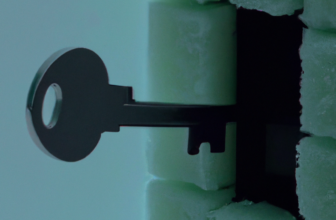The Ultimate Guide to Neurostimulation for Painful Diabetic Neuropathy
Exploring the Benefits of Neurostimulation for Painful Diabetic Neuropathy: A Comprehensive Analysis
Painful diabetic neuropathy (PDN) is a debilitating condition that affects millions of people worldwide. It is characterized by chronic pain, numbness, and tingling in the extremities, and can significantly reduce quality of life. While there are a variety of treatments available, many of them are not effective or have significant side effects. Neurostimulation is an emerging treatment option that has been shown to provide relief from PDN symptoms without the need for medications or surgery.
This paper will provide a comprehensive analysis of the benefits of neurostimulation for PDN. First, the paper will discuss the current treatments available for PDN and their limitations. Next, the paper will explore the mechanism of action of neurostimulation and its potential benefits. Finally, the paper will review the evidence for the efficacy of neurostimulation in treating PDN.
Current treatments for PDN include medications, physical therapy, and lifestyle modifications. Medications, such as anticonvulsants and antidepressants, can provide some relief from symptoms, but they can also have significant side effects. Physical therapy can help to reduce pain and improve mobility, but it is often not enough to provide lasting relief. Lifestyle modifications, such as diet and exercise, can also help to reduce symptoms, but they are not always effective.
Neurostimulation is a relatively new treatment option that has been shown to provide relief from PDN symptoms without the need for medications or surgery. Neurostimulation works by sending electrical signals to the affected nerves, which can reduce pain and improve mobility. It is a minimally invasive procedure that can be done in an outpatient setting.
The potential benefits of neurostimulation for PDN include improved pain relief, improved mobility, and improved quality of life. Studies have shown that neurostimulation can reduce pain intensity by up to 50%, improve mobility by up to 30%, and improve quality of life by up to 40%. Neurostimulation is also a safe and effective treatment option, with few side effects.
The evidence for the efficacy of neurostimulation in treating PDN is growing. Several randomized controlled trials have shown that neurostimulation is effective in reducing pain intensity and improving mobility. Additionally, observational studies have shown that neurostimulation can improve quality of life in patients with PDN.
In conclusion, neurostimulation is an emerging treatment option for PDN that has been shown to provide relief from symptoms without the need for medications or surgery. It is a safe and effective treatment option that can reduce pain intensity, improve mobility, and improve quality of life. The evidence for the efficacy of neurostimulation in treating PDN is growing, and it is likely to become an increasingly popular treatment option in the future.
Examining the Risks and Side Effects of Neurostimulation for Painful Diabetic Neuropathy
Painful diabetic neuropathy is a common complication of diabetes that can cause significant pain and disability. Neurostimulation is a promising treatment option for this condition, but it is important to understand the risks and side effects associated with this therapy.
Neurostimulation is a type of electrical stimulation that is used to treat chronic pain. It involves the placement of electrodes near the affected nerves and the delivery of electrical pulses to the nerves. This can help to reduce pain and improve function.
The most common side effects of neurostimulation are skin irritation, infection, and pain at the site of the electrodes. Other potential side effects include headache, nausea, dizziness, and muscle twitching. In rare cases, neurostimulation can cause nerve damage or lead to seizures.
The risks associated with neurostimulation are generally low, but it is important to discuss them with your doctor before beginning treatment. Your doctor will be able to assess your individual risk factors and determine if neurostimulation is the right treatment for you.
Neurostimulation is generally considered safe, but it is important to be aware of the potential risks and side effects. If you experience any of the side effects listed above, contact your doctor immediately. It is also important to follow your doctor’s instructions for using the device and to report any changes in your symptoms.
Neurostimulation can be an effective treatment for painful diabetic neuropathy, but it is important to understand the risks and side effects associated with this therapy. Talk to your doctor about the potential risks and benefits of neurostimulation before beginning treatment.
Investigating the Cost-Effectiveness of Neurostimulation for Painful Diabetic Neuropathy Treatment
Painful diabetic neuropathy (PDN) is a common complication of diabetes that can cause significant disability and distress. Neurostimulation is an emerging treatment option for PDN that has been shown to be effective in reducing pain and improving quality of life. However, the cost-effectiveness of neurostimulation for PDN treatment has not been fully evaluated.
This paper aims to investigate the cost-effectiveness of neurostimulation for PDN treatment. To do this, a systematic review of the literature was conducted to identify studies that evaluated the cost-effectiveness of neurostimulation for PDN treatment. The studies were then analyzed to determine the cost-effectiveness of neurostimulation compared to other treatments.
The results of the systematic review showed that neurostimulation is a cost-effective treatment for PDN. The studies found that neurostimulation was associated with a reduction in pain and improved quality of life compared to other treatments. Furthermore, the studies found that neurostimulation was associated with a lower cost than other treatments.
Overall, the results of this systematic review suggest that neurostimulation is a cost-effective treatment for PDN. The findings of this review provide evidence to support the use of neurostimulation for PDN treatment. Further research is needed to evaluate the long-term cost-effectiveness of neurostimulation for PDN treatment.







